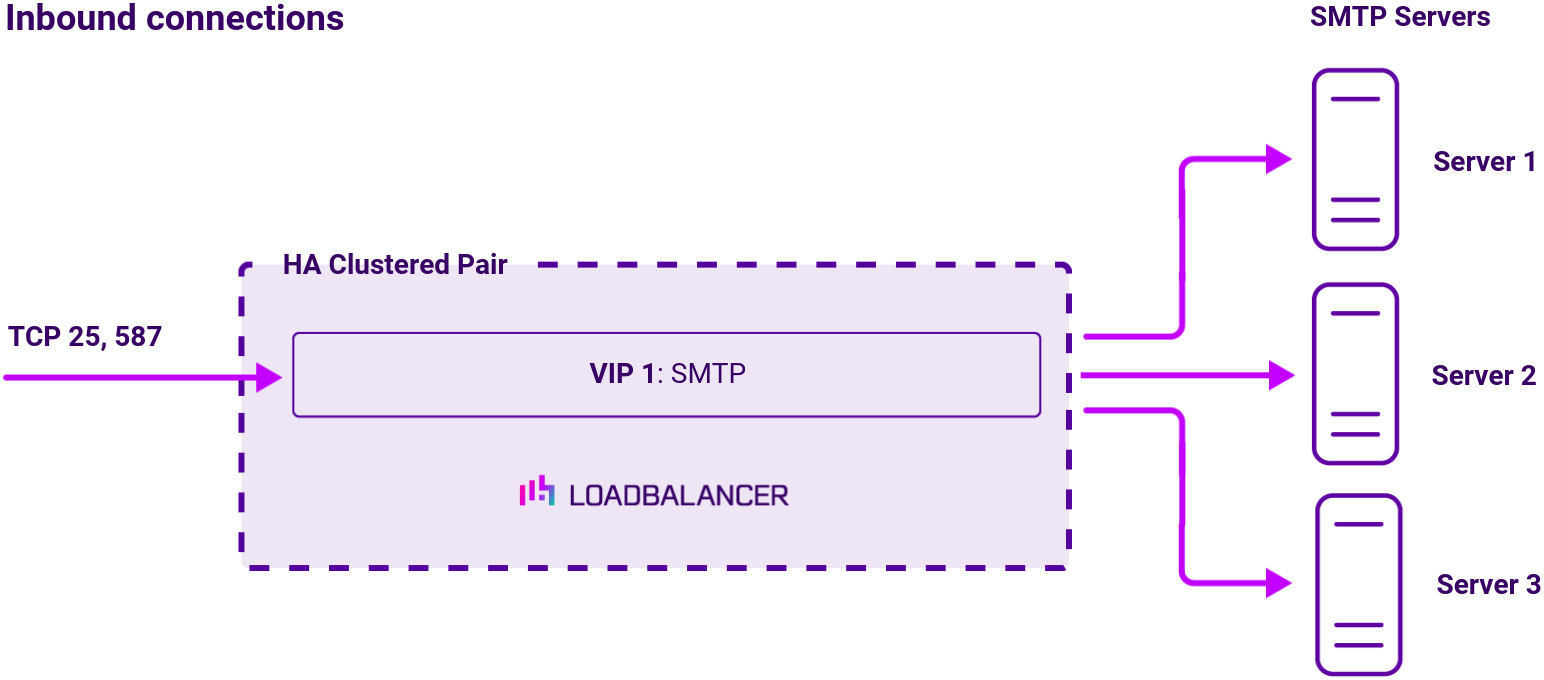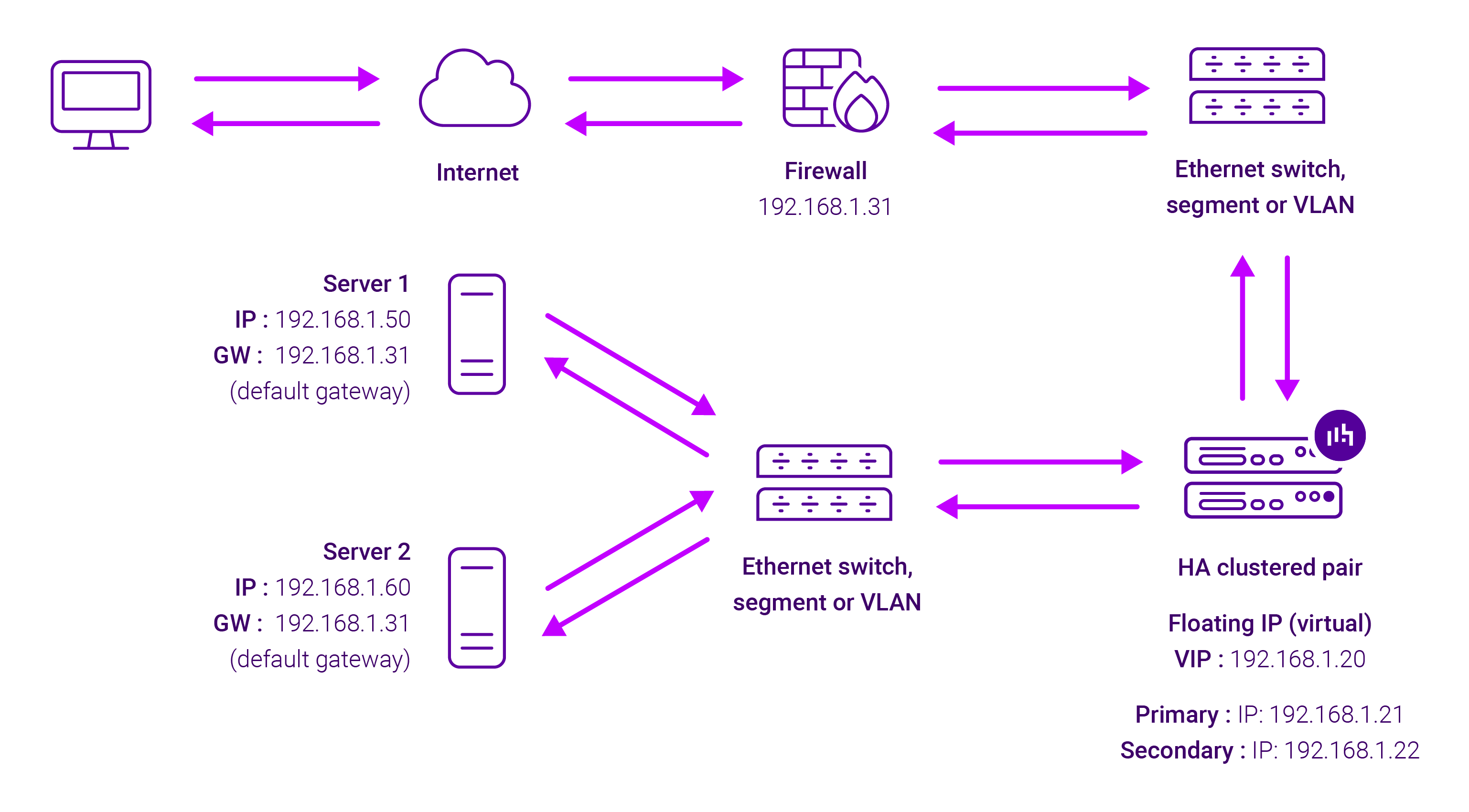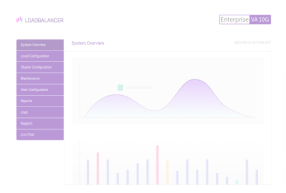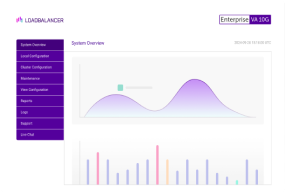Benefits of load balancing SMTP servers
Load balancing SMTP (Simple Mail Transfer Protocol) Servers provides:
- High Availability (HA): Load balancing ensures that the email service remains operational even if one or more servers fail. A load balancer monitors the health of all the SMTP servers in the pool. If a server goes down or fails a health check, the load balancer automatically stops sending traffic to that server. All new email traffic is then redirected to the remaining healthy servers, preventing a single point of failure and minimizing downtime for your email infrastructure.
- Performance and resource optimization: By distributing incoming email traffic across multiple servers, a load balancer prevents any single server from becoming overwhelmed. Spreading the workload ensures that no server experiences high load or bottlenecks, which helps to maintain consistent, faster email processing and delivery times. It maximizes the utilization of all available server resources, ensuring your hardware investment is used efficiently. This is especially important for organizations with high-volume or bursty email traffic (e.g., bulk mail, transactional emails).
- Scalability: Load balancing makes it easy to handle growth in email volume and perform maintenance without service disruption. When email volume increases, it’s possible to simply add more SMTP servers to the pool, and the load balancer will automatically begin distributing traffic to them, allowing for seamless scaling.
About SMTP servers
The Simple Mail Transfer Protocol (SMTP) is an Internet standard communication protocol for electronic mail transmission.
Mail servers and other message transfer agents use SMTP to send and receive mail messages.
Why Loadbalancer.org for SMTP servers?
Loadbalancer’s intuitive Enterprise Application Delivery Controller (ADC) is designed to save time and money with a clever, not complex, WebUI.
Easily configure, deploy, manage, and maintain our Enterprise load balancer, reducing complexity and the risk of human error. For a difference you can see in just minutes.
And with WAF and GSLB included straight out-of-the-box, there’s no hidden costs, so the prices you see on our website are fully transparent.
More on what’s possible with Loadbalancer.org.
How to load balance SMTP servers
The load balancer can be deployed in four fundamental ways: Layer 4 DR mode, Layer 4 NAT mode, Layer 4 SNAT mode, and Layer 7 Reverse Proxy (Layer 7 SNAT mode).
For SMTP servers, Layer 7 Reverse Proxy is recommended.
Virtual service (VIP) requirements
To provide load balancing and HA for SMTP, a single VIP is required.
Load balancing deployment concept

Note
The load balancer can be deployed as a single unit, although Loadbalancer.org recommends a clustered pair for resilience and high availability.
Load balancing topology
Layer 7 Reverse Proxy can be deployed using either a one-arm or two-arm configuration. For two-arm deployments, eth1 is typically used for client side connections and eth0 is used for Real Server connections, although this is not mandatory since any interface can be used for any purpose.
For more on one and two-arm topology see Topologies & Load Balancing Methods.
About Layer 7 Reverse Proxy load balancing
Layer 7 Reverse Proxy uses a proxy (HAProxy) at the application layer. Inbound requests are terminated on the load balancer and HAProxy generates a new corresponding request to the chosen Real Server. As a result, Layer 7 is typically not as fast as the Layer 4 methods. Layer 7 is typically chosen when either enhanced options such as SSL termination, cookie based persistence, URL rewriting, header insertion/deletion etc. are required, or when the network topology prohibits the use of the Layer 4 methods.
The image below shows an example Layer 7 Reverse Proxy network diagram:

Because Layer 7 Reverse Proxy is a full proxy, Real Servers in the cluster can be on any accessible network including across the Internet or WAN.
Layer 7 Reverse Proxy is not transparent by default, i.e. the Real Servers will not see the source IP address of the client, they will see the load balancer’s own IP address by default, or any other local appliance IP address if preferred (e.g. the VIP address).
This can be configured per Layer 7 VIP. If required, the load balancer can be configured to provide the actual client IP address to the Real Servers in 2 ways. Either by inserting a header that contains the client’s source IP address, or by modifying the Source Address field of the IP packets and replacing the IP address of the load balancer with the IP address of the client. For more information on these methods, please refer to Transparency at Layer 7 in the Enterprise Admin Manual.

















